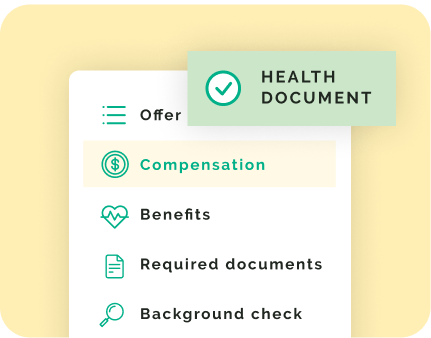How do you successfully onboard a new hourly employee? It can be challenging, but it’s essential to get off on the right foot so that the employee feels comfortable and engaged from the start. This blog post will discuss some tips for communicating with your new hires throughout the onboarding process. We’ll also talk about ways to engage them early on and reinforce your company values. Let’s get started!
What is the goal of onboarding new employees?
When it comes to onboarding new employees, it is crucial to articulate the goals of the onboarding process. By clearly outlining the expectations and objectives of onboarding, employers can ensure that new hires are correctly oriented and introduced to the company culture. Furthermore, articulating the onboarding goals can help identify any areas where your new hires may need additional training or support.
Here are a few examples of how articulating the onboarding goals can benefit both employers and employees:
New employees will clearly understand what is expected of them from the start, which can help avoid misunderstandings or confusion down the road.
Articulating the onboarding goals can help ensure that everyone is on the same page, from HR to managers to new hires. This can help to make the process run more smoothly and efficiently. By taking the time to articulate the goals of onboarding, employers can show that they are invested in their new hires and committed to helping them succeed. This can help to build trust and rapport from the start.
Once they understand the big picture, you can further break down their onboarding into smaller, bite-sized pieces. These include:
- – Providing an overview of the company’s history, mission, and values
- – Explaining the company’s structure and how each department works together
- – Outlining job duties and responsibilities
- – Setting performance goals
- – Providing information about company policies and procedures
- – Introducing employees to their co-workers and other key stakeholders
How can you ensure that the process is smooth for both the employee and your team members?
One of the most important aspects of being a manager is knowing how to onboard new team members. The onboarding process can be overwhelming for new employees, so it’s essential to make sure that the process is as smooth and stress-free as possible. Here are a few tips to help ensure a successful onboarding experience for both the employee and your team:
First, be sure to communicate the expectations and objectives of the role to the new employee, which will help set the tone for their entire experience on the team.
Next, take the time to introduce the new employee to each team member, and this will help them feel comfortable and welcomed from day one.
Finally, be sure to provide ongoing support and training during the first few weeks and months on the job. This will help the new employee adjust to their new role and responsibilities, and it will also help them feel like a valuable member of the team.
What are some best practices to follow when onboarding new employees?
When onboarding new employees, it is essential to set them up for success. Here are some best practices to follow:
1. Define expectations upfront: Be clear about the new employee’s expectations in terms of job duties, workload, and behaviors. This will help them hit the ground running and avoid any surprises down the road.
2. Provide a comprehensive orientation: Give new employees a thorough overview of the company, its culture, policies, and procedures. The more informed they are, the easier it will be to adjust to their new environment.
3. Introduce them to their team: A supportive team is essential for a smooth transition into a new role. Make sure to introduce the new employee to their teammates and provide opportunities to bond and build relationships.
4. Check in regularly: Don’t forget to periodically check in with the new employee to see how they are settling in and if they have any questions or concerns. This will show that you are invested in their success.
How can you make sure that the new hire feels welcomed and comfortable in their new role?
There are a few key things that managers and team members can do to make sure that the new hire feels welcomed and comfortable in their new role. It’s essential to communicate the expectations of the role – what the new hire will be responsible for, what the team’s goals are, etc. This will help the new hire hit the ground running and feel like they contribute from day one.
Additionally, it’s essential to give the new hire a chance to know their team members and build relationships. Managers and supervisors can do this by scheduling regular check-ins, encouraging social interaction outside of work, and involving the new hire in team-building activities.
To make the most of your onboarding process, it’s important to provide early feedback to help the new hire learn and grow in their role. Managers and team members can create a supportive and welcoming environment for all hourly employees by taking these steps.
Are there any challenges or potential problems with onboarding new employees that managers should be aware of?
While there are many potential benefits to onboarding new employees, managers should be aware of some of the challenges and potential problems. One of the most common challenges is ensuring that all employees receive the same level of onboarding. This can be difficult to achieve if employees are hired at different times or come from different backgrounds.
Another challenge is that onboarding can be time-consuming and resource-intensive, making it difficult to implement on a large scale. Finally, onboarding new employees always carries some risk, as there is always the potential for something to go wrong. However, by being aware of these challenges and taking steps to mitigate them, managers can ensure that onboarding is a positive experience for employers and employees.
Tips for retaining newly hired employees and What to do if things go wrong
Hiring new employees is an expensive and time-consuming process, so it’s important to do everything to retain them. One of the best ways to retain employees is to provide clear expectations and ongoing feedback.
New employees should be given a detailed job description, and they should be told how management will evaluate their performance. In addition, they should be given regular positive and constructive feedback so that they know what they are doing well and where they need to improve. If things do go wrong, it’s important to take corrective action quickly.
Employees who feel like they are being mistreated or who are not allowed to improve are much more likely to leave. You can help ensure that your new employees stick around for the long haul by taking these steps.
The benefits of a good onboarding process
A good onboarding process is essential for ensuring that new employees feel welcome and prepared to do their best work. By orienting new hires to the company culture and providing them with the tools and information they need to be successful, businesses can foster a sense of belonging and reduce turnover.
Remember, properly onboarding new employees can improve job satisfaction and performance, positively impacting the bottom line. When done right, onboarding is a win-win for both employers and employees.












